The collateral damage in the drone attacks in Afghanistan and Pakistan are a constant reminder that the use of precision air-to-ground weapons is still beset with problems. Results have shown that even in an area where there is complete dominance of the air space and no threat from ground-based surface-to-air missiles, the use of precision weapons can cause serious collateral damage.
The Fulda Gap, a region between the former East German border and Frankfurt was strategically important during the Cold War as a possible route for the Warsaw Pact armour to break out in the event of war in Europe. A whole range of aircraft and weapon systems were developed by the West to counter this possible armour offensive and to minimise the threat to NATO aircraft from the formidable integrated air defence system of the Warsaw Pact forces. I Both the West and the erstwhile USSR developed aircraft and weapons to enhance offensive capability and reduce vulnerability of their own forces. Although this combat scenario was never tested, it provided the technological impetus for the development of sophisticated air launched Precision Guided Munitions (PGM).
In the aftermath of Desert Storm much of the limitation of the field of vision (FOV) of advanced targeting systems and sensors, insufficient resolution for target discrimination at medium and high altitude and vulnerability to weather have all been addressed, but still remain critical to weapon effectiveness.
The Falkland War of 1982 saw the effect of air-to-surface missiles when an Argentine Navy Super Entendard fired an Exocet AM-39 missile and disabled the HMS Sheffield. Similar weapons were used during the Iran-Iraq War (1980-88). Operation Desert Storm in January-February 1991, the first time since the Vietnam War when air power was employed on a massive scale, marked the beginning of the era of sophisticated air operations.. The air campaign saw the deployment by coalition forces of nearly every type of fixed wing aircraft and helicopter. The American forces alone flew over 40,000 strike and 50,000 support missions. The Operation provided an opportunity to assess the operational performance of a large number of combat aircraft and weapons systems under actual combat conditions. Operational tests under controlled conditions or small scale skirmishes do not provide adequate data to provide long term projections of aircraft and weapon capabilities. The US General Accounting Office (GAO) conducted a study on the operations with the following objectives :
- Determine the use, performance and effectiveness of weapons systems and to establish the co-relation between the actual performance in war and claims of the manufacturers.
- Describe the relationship between cost and performance of the weapon employed.
- Establish whether the unique conditions in Iraq limit the lessons learnt. CNN’s spectacular footage of PGMs destroying bridges and tanks conveyed the impression that these munitions provided a panacea for air-to-ground operations but the GAO report found otherwise. The report was classified but the summary laid the guidelines for the development of future weapons particularly air-to-ground weapons. GAO’s analysis of the results of the bombing showed :
- The effectiveness of air power was inhibited by the aircraft sensor’s inherent limitations in identifying and acquiring targets.
- There were failures to gather intelligence on the existence or location of certain critical targets. The ability to collect and disseminate timely battle damage assessments was found wanting .
- Pilots noted that infra-red, electro-optical and laser systems were seriously degraded by clouds, rain, fog, smoke and high humidity.
- The reduced accuracies of weapons released at medium and high altitude and absence of timely Battle Damage Assessment (BDA) led to reduced effectiveness, increased risks from making repeat strikes and overall increased cost.
- “One Bomb One Target” efficiency was not achieved.
The air campaign did not validate the purported efficiency of precision munitions and in many cases, the manufacturers claims about weapons system performance were overstated, misleading, inconsistent with the best available data or unverifiable. In the aftermath of Desert Storm much of the limitation of the field of vision (FOV) of advanced targeting systems and sensors, insufficient resolution for target discrimination at medium and high altitude and vulnerability to weather have all been addressed, but still remain critical to weapon effectiveness. Designs and technology are constantly tweaked to ensure that the limitations of one aspect of the weapon is offset by the advantages of another on-board subsystem.
The next major air operations was against the Bosnian Serb Army (BSA) in August-September 1995 which saw the NATO forces launch Operation Deliberate Force attacking :
- Key air defence communication nodes.
- Air Defence Command and Control facilities.
- Early Warning Radar sites.
- Known Surface to Air missiles (SAM) sites.
- SAM support sites.
- Infrastructure and lines of communications.
All these targets were engaged with a preponderance of precision munitions. The NATO and US forces flew 3515 missions but more importantly, as against 318 dumb bombs, 708 precision munitions were used. The objectives of the air war were achieved but there were 317 civilian casualties to aerial attacks.
In 1999 NATO conducted Operation Allied Force over Kosovo for 78 days committing over than 900 aircraft to the operation…Despite the use of precision munitions there were about 500 civilian casualties in 90 incidents.
In 1999 NATO conducted Operation Allied Force over Kosovo for 78 days committing over than 900 aircraft to the operation. More than 37,000 sorties were flown of which, 14,000 were strike missions and it is reported that over 37 per cent of the 23,000 bombs and missiles launched were precision munitions. Despite the use of precision munitions there were about 500 civilian casualties in 90 incidents. The collateral damage in the air war against targets in an urban environment produced some of the worst Public Relations disasters which included attacks on a civilian radio and TV station in Belgrade and the Chinese Embassy.
The collateral damage in the drone attacks in Afghanistan and Pakistan are a constant reminder that the use of precision air-to-ground weapons is still beset with problems. Results have shown that even in an area where there is complete dominance of the air space and no threat from ground-based surface-to-air missiles, the use of precision weapons can cause serious collateral damage. Air operations by NATO in the recent past in support of rebel forces in Libya has shown that air power can be decisive. It allowed the dissidents to advance under cover of an air umbrella and bring the fight to Col Qaddafi’s headquarters in Tripoli. Air operations in Yugoslavia, Afghanistan and Libya reiterate the lessons learnt earlier and drive home the point that :
- Multi sensor capability is essential to give the weapon an all weather capability. Smoke, bad weather and dust obscured targets in Kosovo and Bosnia preventing attack by laser guided bombs.
- Larger stand-off distances for the launch aircraft give it a much higher degree of protection from air defence systems.
- The high cost of air to ground missiles and other guided munitions need to be addressed and made more affordable while considering weapon-target matching
- Accurate low explosive yield weapons are essential to reduce collateral damage
- Battle Damage Assessment systems are central to establish the efficacy of the mission and can avoid wasteful re-targeting of the same target.
- Air Forces prefer to use precision weapons to dumb bombs as this can reduce the number of missions required to destroy a target
The JAGM will have twice the range of the Hellfire missile (16 kms) and a better seeker efficacy due to the amalgamation of three technologies of laser, radar and heat seeking.
Many have drawn lessons from the recent operations and are developing new weapons or modifying older versions to meet the requirement of the future. Some operational issues have been addressed by recent developments as discussed in the succeeding paragraphs.
USA
High Speed Anti Radiation Missile (HARM) AGM-88E. The latest version of the anti-radiation missile AGM-88E entered service after eight years of development and is being tested on the EA-18G. The earlier version AGM-88D uses GPS to identify the location of the target along with the radiation sensors which guide the missile onto the target. GPS permits the missile on the mother aircraft to locate a radar when it is turned ON and strike it even if the radar is turned OFF.
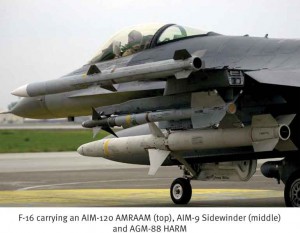 To improve on this capability, the new AGM-88E has been developed by US and Italian companies which goes a step further. The missile remembers where the radar was when it was switched ON. When fired from an attacking aircraft, it homes on to the radar site using electronic emissions from the target, if available. If the radar is switched OFF, it uses the GPS coordinates of the target stored in the memory of the system to home onto it.
To improve on this capability, the new AGM-88E has been developed by US and Italian companies which goes a step further. The missile remembers where the radar was when it was switched ON. When fired from an attacking aircraft, it homes on to the radar site using electronic emissions from the target, if available. If the radar is switched OFF, it uses the GPS coordinates of the target stored in the memory of the system to home onto it.
When close to the target, it uses an on-board high resolution millimeter wave radar to ensure a kill. The AGM-88E also transmits a picture before hitting the target. These innovations provide a quantum jump in the efficacy of the weapon. There are over 2000 of these missiles on order by the US (Navy & Marine Corps), Italy and Germany.
Joint Air to Ground Missile (JAGM). Raytheon and Boeing are teamed up for the Joint Air-to-Ground Missile for the US Forces. This missile will replace the current AGM-114 Hellfire, BGM-71 TOW and AGM-65 Maverick missiles. It will be homed onto the target by an integrated seeker using a semi-active laser, an un-cooled imaging infra-red sensor and a millimeter wave guidance system. It is claimed that the JAGM will offer the attacking aircraft greater lethality, range, operational flexibility, all at lower cost. The JAGM will have twice the range of the Hellfire missile (16 kms) and a better seeker efficacy due to the amalgamation of three technologies of laser, radar and heat seeking. It will be launched by fighter aircraft, helicopters and UAV’s and the warhead will be effective against a battle tank and also against fortified defences. The JAGM addresses some of the most vexing problems of designing a weapon to be carried by fighter aircraft, helicopters and UAV’s. The flight conditions during a fighter mission put the missile through tremendous vibrations particularly during a carrier landing, the missile is subjected to temperatures variations as high as 80 degrees Celsius and very large gravitational forces. Lockheed Martin, the other competitor for the contract, has also developed and tested their version of the JAGM under simulated battle-field conditions with singular success.
The JAGM order is estimated for 33000 missiles at a total programme cost of $5 billion. Users of the Hellfire, TOW and Maverick missiles worldwide are expected to procure the JAGM in future. The JAGM will provide a single missile capability to several types of aircraft, helicopters and UAV’s and is likely to be in operational use by 2016. It is expected to provide flexibility in operations and more importantly, significant reduction in logistical costs.
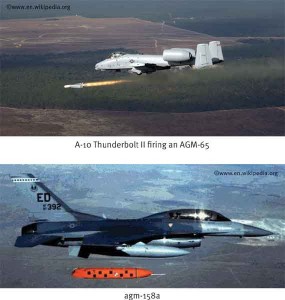 Joint Air-to-Surface Stealth Missile- Extended Range (JSSM-ER). The original AGM-158A JSSM from Lockheed Martin is in reality a long range semi-stealth cruise missile that weighs 2250 pounds. The USAF considered various options of improving the AGM-158A and decided on an extended range version designated as the AGM-158 B which will have increased range and improved engine.
Joint Air-to-Surface Stealth Missile- Extended Range (JSSM-ER). The original AGM-158A JSSM from Lockheed Martin is in reality a long range semi-stealth cruise missile that weighs 2250 pounds. The USAF considered various options of improving the AGM-158A and decided on an extended range version designated as the AGM-158 B which will have increased range and improved engine.
The development of this extended range missile that began in 1999 suffered delays owing to a number of problems in reliability, accuracy, launcher and power plant. These were all addressed by Lockheed Martin and it entered service with the USAF in 2009 to be used on the F-15, F-16, F-35 Joint Strike Fighter, B-52 bomber, B-1B bomber and the B-2 Spirit bomber. The Royal Australian Air Force has ordered these for its F-18 fleet, Netherlands Air Force and the Republic of Korea Air Force are also likely to acquire these. The USAF plans to acquire 3700 AGM-158A with each missile costing $700,000.
The missile is 14 feet long and has a wing span of eight feet and is powered by a turbofan engine. The missile flies at sub-sonic speeds reaching targets 950 kms away by internal navigation with midcourse GPS updates and a terminal Imaging Infra-red (IIR) seeker to deliver a 1000-pound warhead. It has both blast and penetrator warheads. The JASSM-ER will be used with great precision against infrastructure targets and heavily defended targets. The extended range JASSM is likely to be operational and ready to deploy in 2013.
The US is developing air-to-surface weapons to cover the entire spectrum of conflict and be in a position to engage targets worldwide. All efforts are being made to increase the stand-off distances and improve survivability of attacking aircraft.
Russia
The Russian philosophy for the development of air-to-surface missiles hinged on the twin requirements of giving the Soviet Frontal Aviation the capability of providing air support to the Soviet ground forces and protecting them from air attacks. Russian developments focused on PGM’s to attack fortifications and ground forces and anti-radiation missiles to knock out NATO air defences. The current developments in Russian air-to-surface missiles have followed the same trend. Russian technology has adapted some the earlier designs, some weapons are unique Russian designs and in some cases, they have adapted Western designs to suit their requirements. These concepts can be seen in the contemporary air-to-surface missiles where most use the airframe and propulsion systems of earlier models with improvements in digital technology replacing the Soviet era electro-optical and radar systems.
The French have imbibed the lessons from their recent combat experience and invested in modifying their older dumb weapons into relatively low-cost precision weapons.
The Russians have developed unique missiles such as the Kh-31 /NATO AS-17 Krypton which has a wide array of roles. The Kh-59M/ NATO AS18 and Kh-25/ NATO AS-10 are also significant weapons in the Russian arsenal.
Kh-59 M (NATO AS-18 Kazoo Series). The Kh-59 M series is an extended version of the earlier Kh-59 (NATO AS-13) missile. The original KH-59 was a two stage solid fuel propulsion missile with a 115 km range with TV guidance. The new version Kh-59 MK series is a more effective weapon, the most significant change was the installation of ventral RDK-300 turbojet engine for sustained flight and the range has been increased to over 280 kms. The basic original design has been developed into what essentially is a completely new weapons viz. the Kh-59MK an anti-shipping missile and the Kh-59 MK2, a land attack missile. The auto-pilot can be set to fly at different heights between 50 to 1000 metres above the ground and also at seven metres above the sea. The electro-optical seeker has been replaced with a new active radar seeker designed for anti-shipping or other high radar contrast targets. The Kh-59 M2E is an improved version optimised for night operations with a complete make-over of the low-light capabilities.
Kh-31 P (NATO AS-17 Krypton). The supersonic Kh-31P entered service in 1998 designed to be an anti-radiation missile to suppress the US Patriot and I-Hawk missiles. The missile is powered with a solid fuel rocket booster to accelerate it to ramjet ignition speed, which then accelerates it further till burnout. The missile reaches a speed of Mach 4.5 at height and Mach 2.7 at low level. The combination of small size and very high speed make it a very difficult target to intercept. It was claimed that an air-to–air version was being developed to be used as an AWACS killer. The basic anti-radiation version Kh-31P has band- specific seekers and the required missile has to be chosen during the mission planning phase. The missile has undergone continuous development. The Kh-31PK is an improved missile with a more effective warhead and proximity fuse to increase lethality. The Kh-31PD has an extended range using an improved ramjet engine and greater fuel capacity. The radar seeker has also been improved giving a coverage of 1 to 11 Ghz. The variant Kh-31A with a range of 70 kms is a high speed anti-shipping missile with a new Leninetz RGS-31 active radar homing seeker, the seeker can lock on to the target before launch or it can acquire the target post launch. The Kh-31 AD is an extended range variant of the Kh-31A with a bigger warhead, an improved radar seeker with a larger field of detection and can be used in choppy sea conditions up to a range of 140 kms. In the development of this missile Russia has progressively modified the original weapon and adapted it to the changing requirements.
Chinese air-to-ground missile development has been driven by its operational necessity to cater for a Taiwan contingency, pose a threat to US naval forces who may interfere with China’s military designs on Taiwan and to support its new Active Defence strategy.
Russian developments have primarily focused on increasing the range and lethality of its heavy air-to-surface missiles and there appears to be no move to reduce the size of the warhead and reduce the risk of collateral damage. It is quite possible that Russia does not visualise a scenario where these weapons would be used in asymmetric warfare or against low value targets.
China
Chinese operational philosophy was inhibited by the fact that till the introduction of the Su-30 MK and FH-7 fighter aircraft, its Air Force lacked the capability to penetrate enemy air defences. The induction of an indigenous aircraft carrier will enhance China’s ability to project power away from its shores. On-board air-to-ground missiles will further extend the capability of carrier-borne fighters. At the Zhuhai air show in 2010, China displayed more than 25 varieties of unmanned aircraft, some for combat roles and others for reconnaissance. This clearly demonstrates China’s ambition to be amongst the front runners in unmanned aircraft technology, small, smart, accurate weapons for unmanned aircraft are essential if their potential is to be exploited. It is reported that one of the displays was a pictorial display of the WJ 600 UAV powered by a jet engine and armed with several missiles attacking what appeared to be a US carrier.
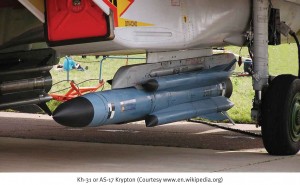 China has developed an air-launched land attack missile, KD-88 which is about the size of the C-802 AKG anti-ship missile. The KD-88 has been seen carried by the Su-30MKK and JH-7 fighters. Details available about the missile are scanty; but it appears to have a heat sensing and TV guidance system. The turbojet engine will give it a range between 100 to 200 kms thus making it ideal for attacking large targets on land with high radar contrast and ships. China has also exhibited what resembles a ramjet powered missile as a part of the weapon systems for the Xian FBC-1 fighter (export variant of the JH-7 fighter). This supersonic missile could be used against ships and also for Suppression of Enemy Air Defence roles.
China has developed an air-launched land attack missile, KD-88 which is about the size of the C-802 AKG anti-ship missile. The KD-88 has been seen carried by the Su-30MKK and JH-7 fighters. Details available about the missile are scanty; but it appears to have a heat sensing and TV guidance system. The turbojet engine will give it a range between 100 to 200 kms thus making it ideal for attacking large targets on land with high radar contrast and ships. China has also exhibited what resembles a ramjet powered missile as a part of the weapon systems for the Xian FBC-1 fighter (export variant of the JH-7 fighter). This supersonic missile could be used against ships and also for Suppression of Enemy Air Defence roles.
Chinese air-to-ground missile development has been driven by its operational necessity to cater for a Taiwan contingency, pose a threat to US naval forces who may interfere with China’s military designs on Taiwan and to support its new Active Defence strategy. China is a major user of cruise missile technology and it manufactures and exports a wide range of missiles of all categories.
Norway
The Naval Strike Missile is an anti-ship and anti-land target missile developed by the Norwegian company Konsberg Defence Systems (KDS) for which the production contract was signed in 2007. This was initially designed to be a helicopter launched missile but with Norways’s interest in the F-35 Joint Strike Fighter (JSF), the company is in collaboration with Lockheed Martin to produce this weapon for other JSF users. With a range of 240 kms, the missile will weigh around 400 kg and is called the Joint Strike Missile. The design of the missile and the use of composite materials gives it a stealth capability. It is powered by a solid fuel rocket for the initial flight and a turbojet for sustained high subsonic flight till impact. According to KDS it is the only land and sea attack missile which will fit into the internal weapon bay of the F-35. The missile has on-board target database and uses GPS, inertial and terrain reference systems for navigation. It has an imaging infra-red seeker. The JSM will have a two-way networking data link which is said to provide the operator target update, re-targeting capability, mission abort and Bomb Hit Indication.
The IAF sees a role for itself in the full spectrum of conflict but is woefully short of air-to- ground PGMs for its fighter, helicopter and UAV fleets. This aspect will have to be addressed when the IAF acquires the Medium Multi-Role Combat Aircraft…
Norway has focused on modifying an existing weapon into a small air-to-ground missile that gives it great flexibility in operations, lethality with a small warhead, improved bomb damage assessment and incorporates stealth technology for reducing the enemy’s reaction time.
France
The French defence procurement agency awarded Sagem a major contract in 2009 for the AASM (Armement Air- Sol Modulaire) modular air-to-surface weapon for the French Air Force. The contract envisages an order for 3400 AASM’s with a firm order for 680 units and calls upon Sagem to develop and integrate the latest generation GPS module. The modular kit will provide the standard bombs of 125, 250, 500, and 1000 kgs with inertial/ GPS/laser terminal guidance. This development will give the French Air Force a stand-off capability exceeding 50 kms and allow them day and night bombing with a high degree of accuracy. The AASM has been designed to strike targets vertically with precision. These features make it an ideal weapon for difficult terrain and urban warfare, the missile can also be used against moving targets.
The French have imbibed the lessons from their recent combat experience and invested in modifying their older dumb weapons into relatively low-cost precision weapons. Since the kits can be used on a wide variety of dumb bombs, it gives them the capability to engage targets which need a heavy punch as also the ability to destroy small moving targets with great accuracy. The AASM is comparatively inexpensive as compared to the more sophisticated air-to-surface missiles.
UK
The Royal Air Force has been very successful with the Brimstone missile that was originally developed by MBDA as a replacement for the BL-755 cluster bomb. It has a dual sensor i e very high frequency millimeter wave radar and laser guidance. This gives the missile an autonomous target tracking capability and at the same time it can be used in areas where own troops are in close proximity of the enemy forces. The laser designation system was added since the “rules of engagement” in Afghanistan needed a “man in the loop” as this reduced the danger of causing collateral damage. It was originally designed as a “fire and forget” missile to be used against massed armour formations and as an upgraded version of the US made Hellfire anti-tank missile.
After development, it bears no resemblance to the Hellfire and is a completely new missile. The Brimstone missile can be launched from fighter aircraft and is carried three per launcher thus giving fighter aircraft a large weapon load. MBDA is also exploring the possibility of fitting it on helicopters and UAV’s. France and USA have expressed interest in this missile. The missile was originally designed taking into account the lessons of Desert Storm and today it has become a formidable weapon for close air support and has been validated for urban warfare after the experience in Libya.
India
The Indian Air Force’s (IAF) first combat experience of using PGMs was during the Kargil war when Mirage 2000 fighters obliterated a Pakistan army battalion headquarters on Tiger Hill. Only nine smart weapons were used during the war but their efficacy left no doubt.
Military leaders need to evaluate the requirements of future air wars and ensure that the Air Force has the wherewithal to address the challenges of waging and winning wars over the entire spectrum of conflict and not remain bound by the dogma of conventional “force on force” aerial warfare.
India and Russia are jointly developing BrahMos, a supersonic stealth cruise missile with very high kinetic energy at impact. DRDO and the Russian Fererations Mashinostroeyenia have jointly formed BrahMos Aerospace Pvt Ltd to produce variants of the missile. The air-launched version is expected to be mounted on the Su-30MKI. The missile has a range of 280 kms and attains a speed of Mach 2.8. The air launched version will weigh 2500 kgs. One problem envisaged is difficulty in landing the aircraft in the event of the missile not being fired during the mission.
India is looking to procure 100 LGB kits and issued a Request for Proposal in early 2011. Raytheon, Lockheed Martin and Israel have responded. Trials of a homegrown version were conducted in 2010 highlighting India’s urge to achieve self sufficiency in this vital capability. The IAF sees a role for itself in the full spectrum of conflict but is woefully short of air-to- ground PGMs for its fighter, helicopter and UAV fleets. This aspect will have to be addressed when the IAF acquires the Medium Multi-Role Combat Aircraft and the new combat helicopters that it proposes to induct in the near future.
The development of airtoground precision weapons in the last two decades has been based on the operational inputs from conflicts around the world and the over-arching need to protect and minimise the danger to aircrew and aircraft in the face of hostile air defence systems. Coupled with this, is the requirement to destroy targets accurately with minimum force. These two ideas have propelled the development of some of the most effective air-to-surface weapon systems in the history of military aviation. World War I saw military aviation introduce a new dimension to warfare. Since then , the duel between attacking aircraft and ground-based air defence systems to gain an upper hand has been the driving force in the development of air-to-surface missiles. Carl Von Clausewitz in his treatise “On War” has discussed revolutionary wars, the struggle between regular troops and the “people in arms”. In recent times Air Forces have been drawn into such conflicts, necessitating changes in the strategy, tactics and weapons of the Air Forces. Military leaders need to evaluate the requirements of future air wars and ensure that the Air Force has the wherewithal to address the challenges of waging and winning wars over the entire spectrum of conflict and not remain bound by the dogma of conventional “force on force” aerial warfare.




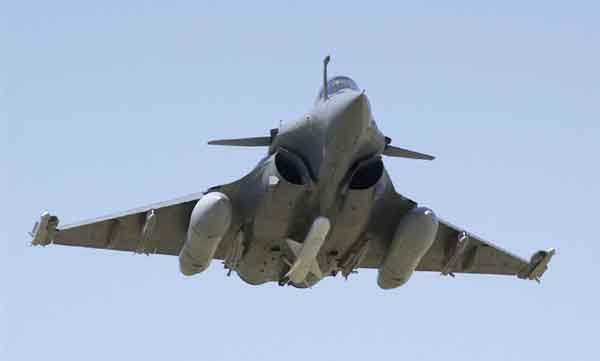
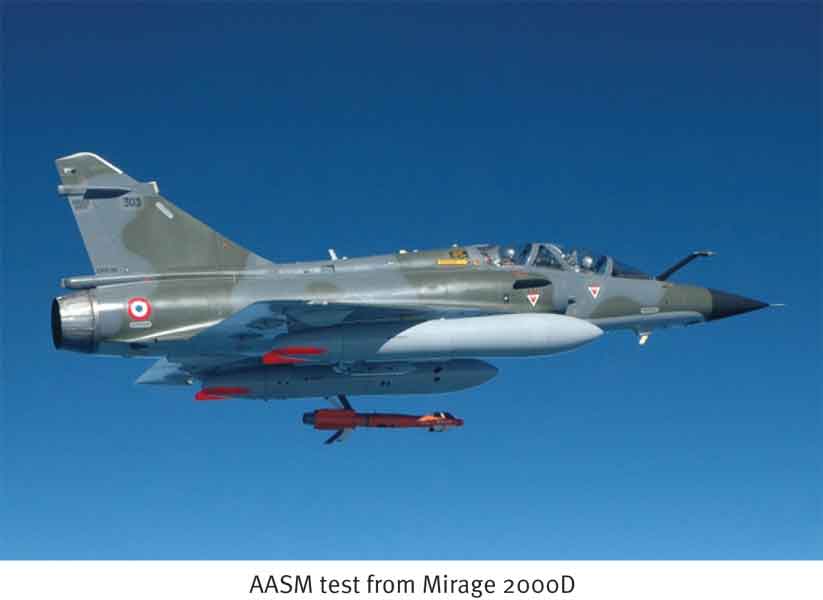

Super article. I like to contact the author. Can I get his contact information.
As per Wikipedia AGM-114 Hellfire missile range is only 8Km. AGM-65 Maverick missile range is 22 km. But Its weight is five times heavier than Hillfire missile ( 50Kg). Whereas AGM-65 weight is 300Kg. 8 Km range is insufficient. Do you know what kind of missiles USA will supply along with Apache helicopter? Our Nirbhay missile is better than NirAGM-158 JASSM.